As an honourary Yorkshireman (self-appointed), I know how big this guy’s reputation in the county is as an experienced real-deal fighter and as an instructor. Judging by what he said in his interview, he is also a deep thinking man that aspires to be greater and inspires others to be greater too. I hope you enjoy this interview as much as I did. The latest Gladiator Interview focuses on the very talented Tony Higo.
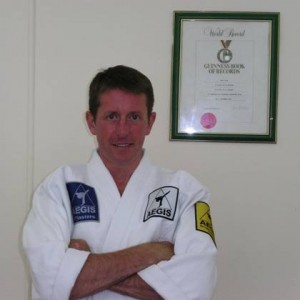
Name: Tony Higo
Age: 55
Occupation: Martial Artist
Grades and Accomplishments: 8th degree Black Belt and Founder of the AEGIS martial arts system, 1st degree black belt karate, Author (“Warrior Wisdom – the 25 laws that govern all success in life and war”, “Game Plan – the 25 secret strategies of the martial arts and how to use them to build a great life”, “Superkick – Your guide to kicking mastery”), World Record Holder (1989/90 Guiness Book of Records – “World’s fastest high kicker”, Inventor of the Allrounder strike pad, Inventor of BeatBoXX accelerated martial arts training system.
When did you first get into martial arts and how did that come about?
I was introduced to boxing before I started school in 1965. My father was a boxer and boxing can be traced in my family back to the 1830’s. My heritage is Irish and gypsy and my great, great grandfathers on both sides of the family were professional boxers as were my uncles and cousins. In short, there was probably never any doubt that I would be a martial artist.
I started karate when I was 13 and have studied it ever since, though mainly its history and philosophy. Over the years I have also studied ju jitsu, MMA, muay thai, kickboxing, savate, escrima and wing chun to a greater or lesser extent.
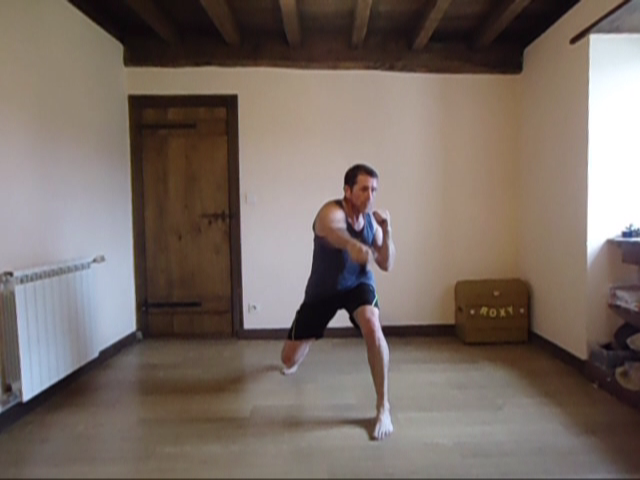
Tell us as little about the highs and lows you have experienced as part of your journey, both as a martial artist and in everyday life.
I tend not to dwell on highs or lows much. I’m always looking forwards toward better things. I have learned over time to appreciate the ‘now’ and to live there more often which is always a challenge. Of course I’ve had things go wrong in my life but often those things turn out for the best in the long run and some of the great things that happen turn out to be only short term gains. I’m very driven to learn and I study a lot. I’m fascinated by human potential and I use the martial arts as a tool to achieve personally and to help others to do the same. I love to learn and I love to teach; I think that is what really drives me forwards toward my future goals.
How has martial arts impacted on your attitudes to other aspects of life?
I honestly can’t say how martial arts impacted on my attitudes to other aspects of life. What I can say is that I have continued to learn and grow in a certain direction and martial arts is the constant factor that has always been present. My understanding of it and interpretation of it has evolved over time which has brought new people into my life and also meant that I have shed others along the way.
“I believe our attitude is the source and governor of everything that we do and how we interpret everything that happens to us.” – Tony Higo
More recently I have put a lot of study into the laws of the martial arts; those things that are ever present which resulted in my book Warrior Wisdom. I live by these laws; they are constantly in my mind and I interpret everything I do through them. They have become the mainstay of the AEGIS system. It’s interesting that in your question you use the word ‘attitudes’ because that is the 1st law I live by. I believe our attitude is the source and governor of everything that we do and how we interpret everything that happens to us.
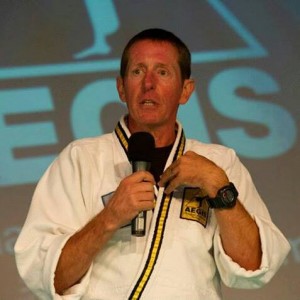
What characteristics do you think you have developed as a result of martial arts training and what characteristics did you already have that made you a better martial artist?
I am calmer, more philosophical, wiser – that’s not to say I don’t have a rant every now and then or that I’m not short tempered often. But I have developed strategies to deal with my emotional conditioning and am improving with how I deal with it.
In martial arts, which to me are a metaphor for life, there are 5 things to be taken into account at any one time which are:
- Universal laws that govern everything we do
- Our philosophy which is how we interpret these laws
- Strategies which are how we use the laws to our best benefit
- Rules which are pre-set strategies that we use automatically because they work most of the time
- Techniques which are the tools we use dictated by the other 4 considerations.
For instance, a jab is a technique, the physical answer to a problem or threat. Its use is dictated by the laws of physics (universal laws), our philosophy, strategy including rule sets which results in us using the jab as a solution to a specific problem. A jab is a technique and responds to the physical laws; our philosophy dictates how we will respond.
A pacifist may not have the jab as any answer as his philosophy precludes violence and the jab is a violent answer to a problem. Our strategy is how we use the jab to effect our outcome. A rule is which jab we will use based on the circumstance or our conditioning.
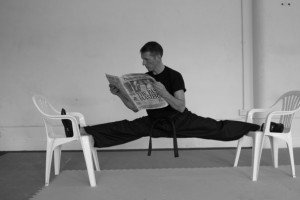
So what I’m trying to say is that every challenge will be answered in a certain way but will always correspond to this hierarchy that I’ve outlined. We call it the AEGIS pyramid with laws at the base and techniques at the summit, something like Maslow’s hierarchy of survival. This hierarchy dictates all our responses and the better we understand it, the better our outcomes. This is one of the characteristics I live by and which I have developed as a strategy for dealing with situations. My study of the martial arts has shaped who I am but it is controlled by the questions I have asked of it. I hope this makes some sense, but it’s an example of how I think which is my character isn’t it?
Many would say ‘mind set’ and ‘attitude’ are the most important part of training. What are your thoughts on this?
Completely! Everything starts with attitude. Attitude is the lens through which we see the world. Good can be bad and bad can be good. It just depends on our attitude. The AEGIS system I teach is taken from Greek mythology but we also use it as an acronym for 5 key concepts that govern all success which are:
- Attitude
- Expectation
- Game Plan
- Implementation
- Study
“It’s your attitude, not your aptitude, that determines your altitude!” – Zig Ziglar
Attitude always comes first and is our first law of AEGIS, the definition of which is well captured by the phrase “it’s your attitude, not your aptitude that determines your altitude”, which, if you are familiar with Zig Ziglar, you will recognise as one of his famous quotes. If you have the right attitude everything will turn out better; even failure which itself is just an attitude. So yes, I believe attitude is the bedrock of everything we do or don’t do in life.
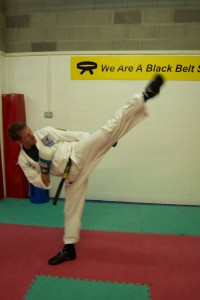
Can you describe a dangerous situation you have been in either in competition, in the dojo or in the street and how the right mindset saved you.
I’ve always been quiet and shy but also stubborn and with a hot temper. I was raised to stand up for myself and take no nonsense from anyone no matter what their size. As a child I was smaller than average (which I actually never noticed but old photographs tell that story.) I had an odd sounding surname, ‘Higo’, and a first name, ‘Anthony’, that I have always hated – but which my Primary school insisted I was called over my true name, which is Tony. I got so much stick at primary school for these two names, and being quiet and small made me a bit of a target for bullying.
“He wouldn’t ask if I was ok. He would ask “did you win?”” – Tony Higo
However, I was a ferocious and quite skilled fighter as all my bullies found out if they pushed me far enough. The mind set of my father also skewed my thinking because if he heard I was in a fight he wouldn’t ask if I was ok; he would ask ‘did you win?’. If I did then all well and good but if I lost he would be angry. This meant I fought hard and even if I didn’t win, nobody came back for seconds.
My older sister related the story of an event which I don’t remember but she was 8 years older than me and often would pick me up from school as a small child. She says that one day she came to collect me and couldn’t see me but heard some kids shouting and laughing. She looked closer and saw them following me, taunting and name calling. She says that suddenly I turned and, even though there were at least 5 kids in the group, I launched myself at them. (CSoN – this sounds just like one of my elder brothers who I am sure is reading this) I tore into them, punching and kicking, until those that weren’t screaming were running for their lives. This is what I was like; if you leave me alone I will do the same to you but if you push me – be prepared!
“It’s about personal leadership, responding rather than reacting and this took me a long time to learn.” – Tony Higo
This is still my personality but nowadays I’m more controlled and disciplined than when I was a child. As a child I had a lot of fights; they always seemed to find me. I’ve had between 50 and 60 street fights against one or more people at once. I didn’t win them all by any means and I think had I had a different temperament I could have walked away from most of them. This is where my study has been focused, to make fighting a last resort not a first resort. It’s about personal leadership, responding rather than reacting and this took me a long time to learn.
What do you think the biggest difference is between martial arts training and self-defence, and how would do you link this with leadership?
Self-defence is a part of martial arts but only a small part. Martial arts takes its name from the Roman god of war Mars which gives us martial or warlike. (CSoN – and “Martin”) An art is a skill set taken to its highest level. I think the better martial artist is the Warlord or General over the Warrior. A General can do everything that a Warrior can but has extra skill sets that set him apart from the common soldiery.
“Too many so called ‘martial artists; are concerned with being a Warrior when they should focus on becoming a General.” – Tony Higo
Instructors around the world talk about the warrior code and warrior spirit but I’m more concerned with the bigger picture. The Warrior is a tool of the General; he is a technique that the General puts to use. Too many so called ‘martial artists’ are concerned with being a Warrior when they should focus on becoming a General. A General is a leader and he knows that war is costly and so he finds every way possible to avoid deploying his troops and only as a last resort does he go to war. This is the true spirit of the martial arts. Sure we must have courage and the ability to fight effectively – that is a given for both soldiers and Generals must be courageous. In fact the courage to walk away from a fight is the greater courage. Fighting is easy to get into which is why most people fall into this trap. Not fighting, the ability to walk away from taunts and threats, takes courage, integrity and personal confidence in oneself.
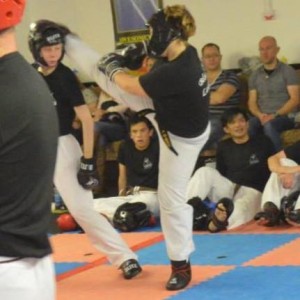
I teach leadership, character ethic martial arts. My goal is to train people to understand the laws of war and its strategies and, through a thorough understanding, to improve their lives and the people around them. We have a number of tools to help us do this.
The self-defence portion of every martial art must be effective – that too is a given – but 99% of all martial arts taught today are not effective. They hang on to outdated beliefs and teachings without ever studying the ‘how’s and ‘why’s and when to adapt to changing circumstance. Let’s face it, it’s a fact of life that we evolve our ideas and upgrade our knowledge so how can so many arts be frozen in time, not changing or adapting to modern demands? I see so much these days about Bruce Lee who, 40 years ago, led a revolution in the martial arts towards effectiveness over tradition. I think he would turn in his grave to know that everything he did to bring martial arts into the 21st century has been lost or turned into the violence of the UFC and its ilk.
I’m interested in Physics and at the end of the 19th century some physicists were saying there was nothing more to know about physics, “we know it all now, but then came Einstein and turned physics on its head. Instead of having nothing left to know, he showed us that we know nothing. Many martial arts today are like the outdated physicists saying there is nothing new to learn. They are dinosaurs and bad for the future of martial arts. But they are the norm and so there is a lot of work to do to change. I want to be part of that change and that is why I don’t network with other martial artists, only occasionally do I come across someone who has thought about what they teach. It’s sad really but true.
What are you most proud of when you look back at your life so far, as a martial artist AND as a person?
It’s hard to say what makes me proud because once I’ve achieved a goal I move on. Nothing I have ever achieved looks like much when I look backwards; not my books, inventions, programs or concepts. It all seems like not much now, I always undervalue what I’ve done. I think it’s for the best otherwise one might let it swell their head. One thing though that surprises and pleases me is the organisation that I’ve built with AEGIS; the teams that I’ve built and who now build their own teams spreading our martial arts message. We’ve touched many lives in a positive way which is nice and is a part of our philosophy; in fact it’s part of our law of spirit which says ‘live, love, learn and leave a legacy’. Our goal is to leave a lasting legacy that helps people to improve their lives through the martial arts so I suppose I’m proud of being a part of that.
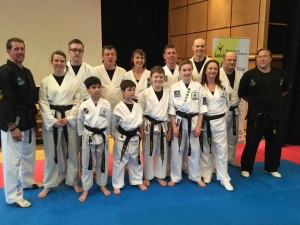
Leaders of tomorrow
Is there anything you would like to say to anyone reading this who may be considering a new martial arts journey? What would you tell them?
I would say to find out what you want before you begin. There are basically 5 kinds of martial arts out there and you should find one which meets what you want to achieve based on these:
- The first kind is the sport martial arts who will teach you how to compete in everything from MMA to forms. If you’re driven to prove yourself this way then this is for you.
- The second is the traditionalists who hark back to a golden age of martial arts and practice based on their understanding of the ancient masters.
- The third kind are the survivalists who focus on self-defence both unarmed and armed.
- The fourth group try to mix old and new, survival and traditional
- The 5th group are the leadership academies of which we in AEGIS are a part
As with anything there are good and bad so I would recommend trying a few before you commit. There is little in martial arts of any formal qualifications though the more progressive are trying to fix this. It’s still down to your personal judgement about whether an academy feels like a place you can be comfortable in. If an instructor is respectful to his students and is respected by them, treats you well, charges an economic price (beware the cheap as chips types because they don’t have trained instructors or good equipment) these are positive signs, and if the instructor looks fit that’s a good sign that he/she is a product of their own message. The most established academies have their own premises and you might check locally that they have been around for a while and have a good reputation.
Read up and research before you buy but do have a try would be my advice. (CSoN – Wise words, Tony)
You have come this far and made an excellent name for yourself. What are your plans for the future?
We have a solid system in place and more and more students are getting our message which means more want to become instructors, so we are opening more and more academies each year and working hard on our instructor syllabus and teaching methods.
Personally I have more books in the pipeline, on both martial arts and personal development. Much of my time is spent working with the senior instructors on developing our strategy for the future, refining and improving what we do in order to build great academies full of really good black belts, black belts who understand how to use their skills – not just on the specific level of combat success but on the global level of life success; to build our students from Warriors into Generals who achieve success through the AEGIS system.
Thanks very much, Tony
There’s a lot of great wisdom there, Tony. Thanks very much.
I am sure our readers have enjoyed hearing what Tony had to say as much as I did. If anybody wants to know more about Tony’s programs, they can visit his website.
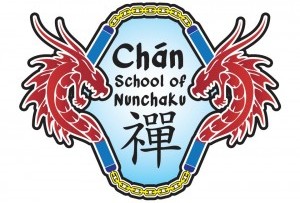
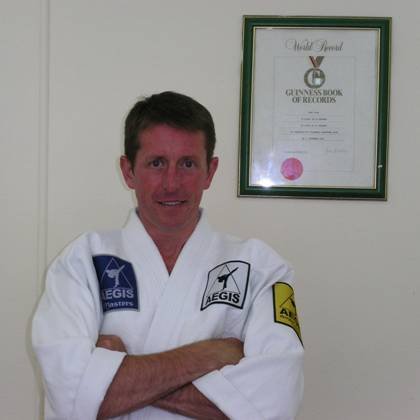
 Follow
Follow